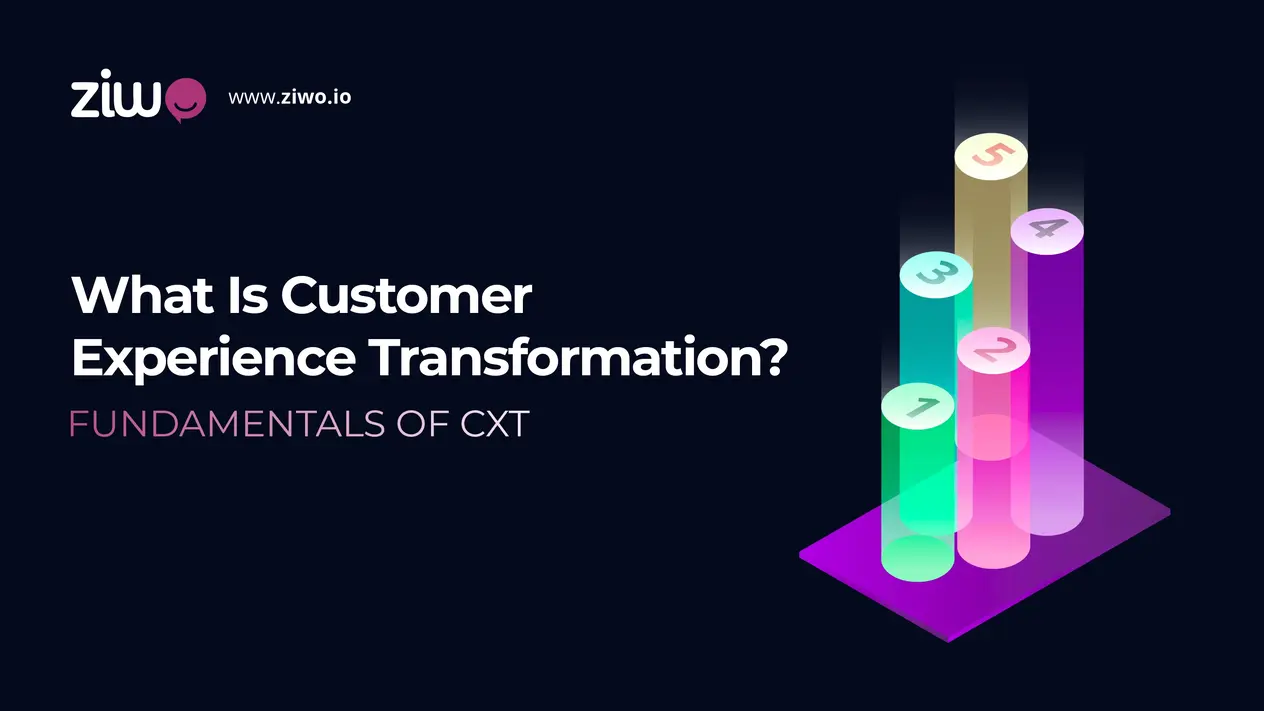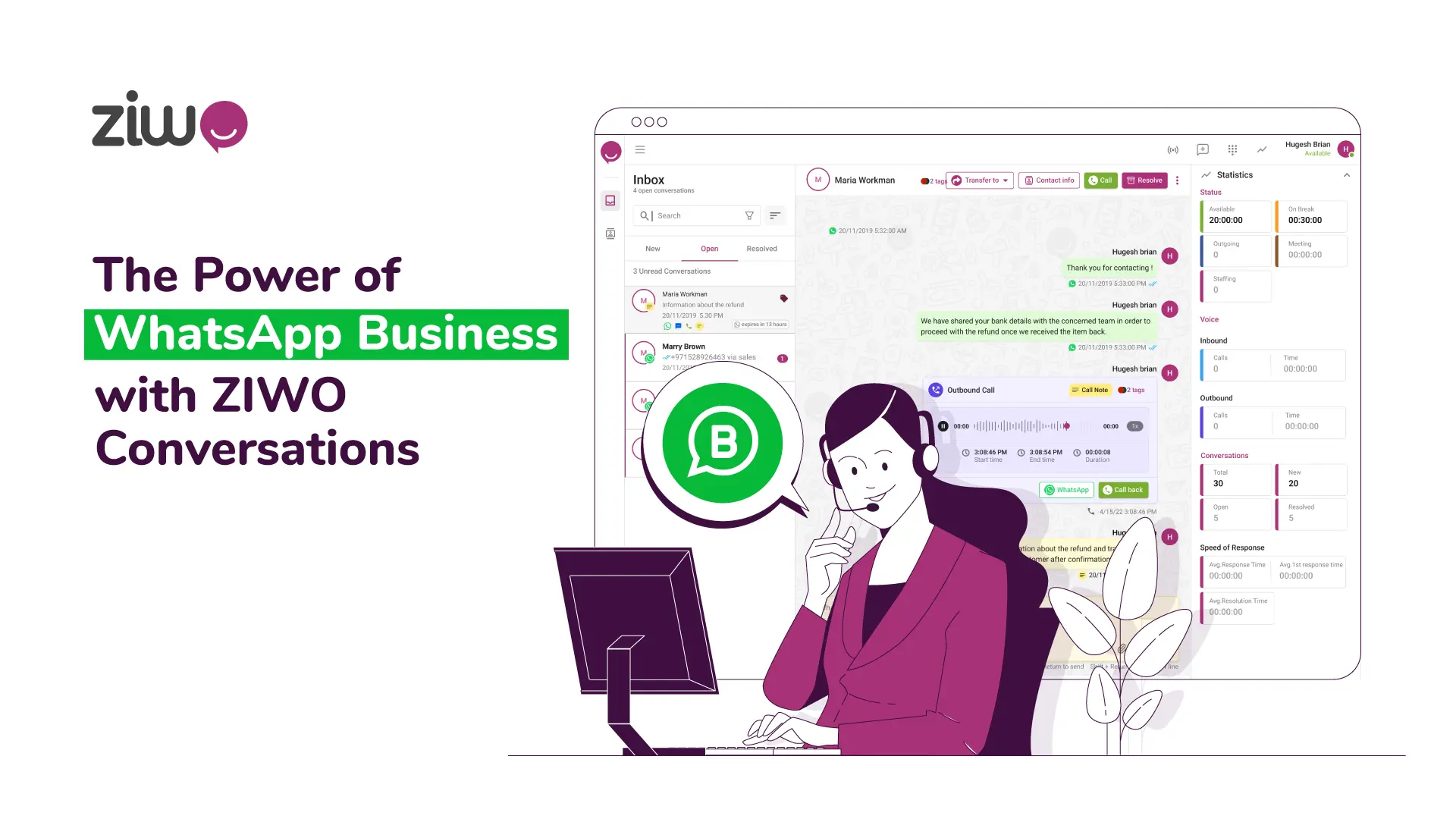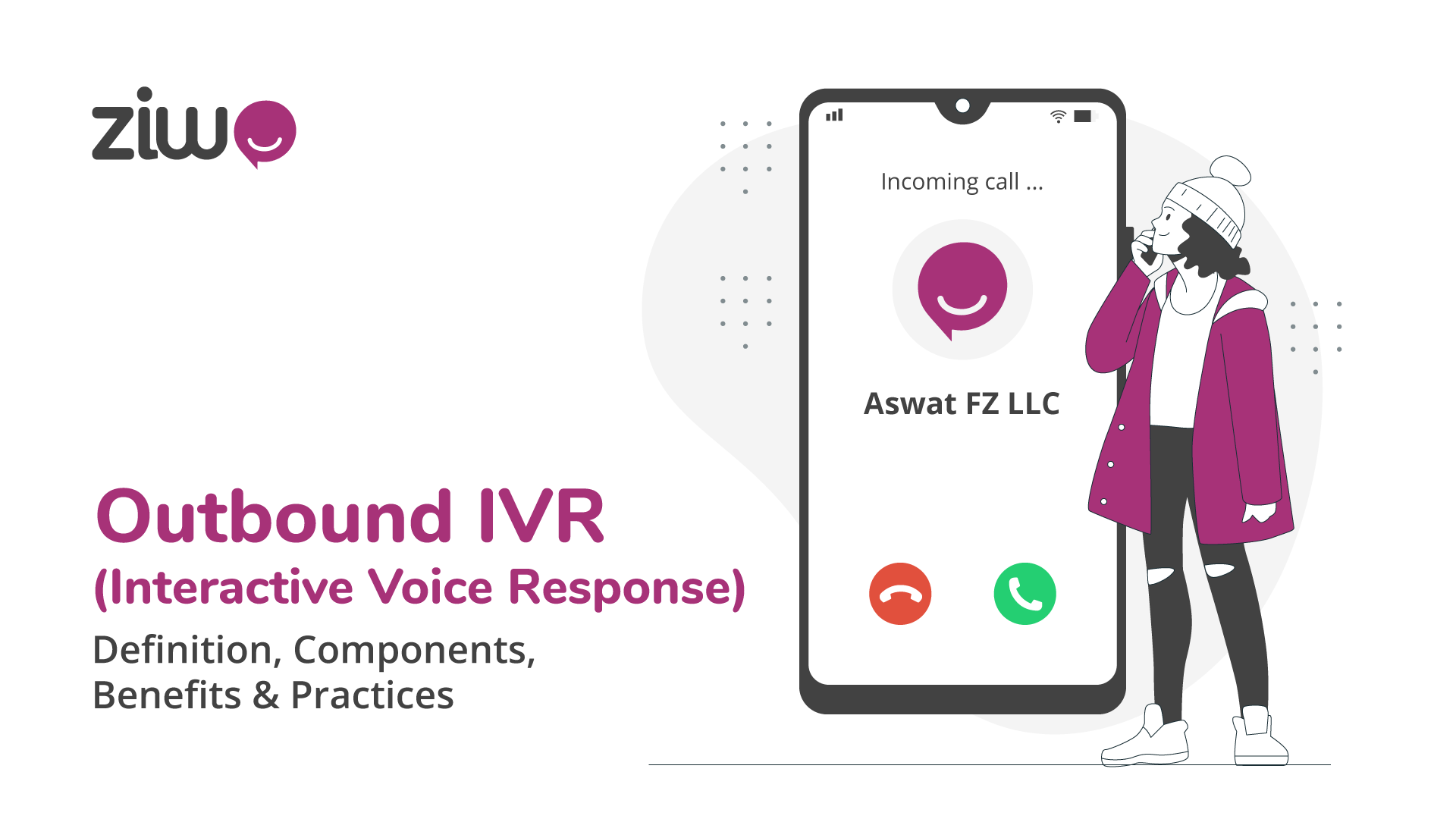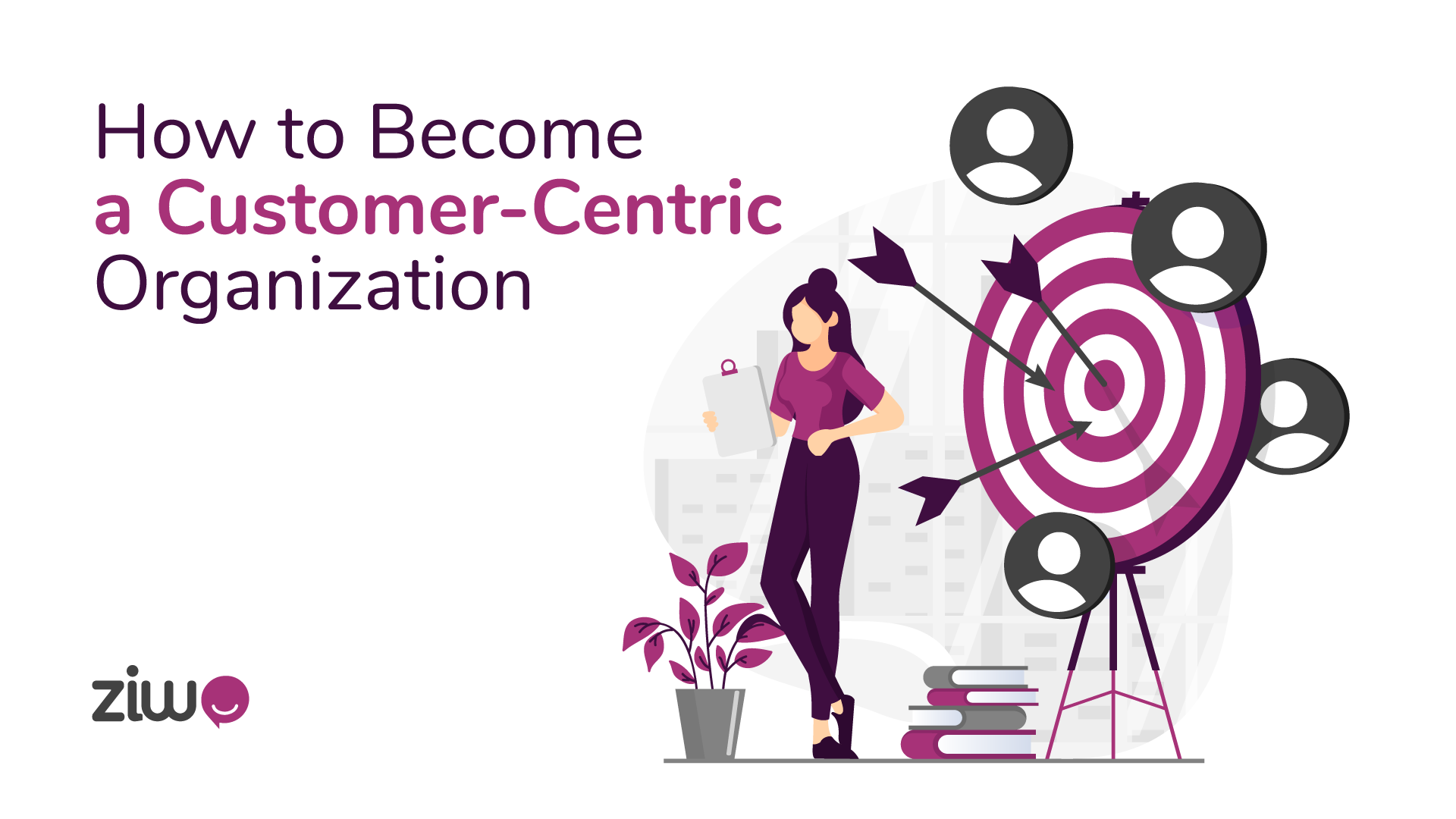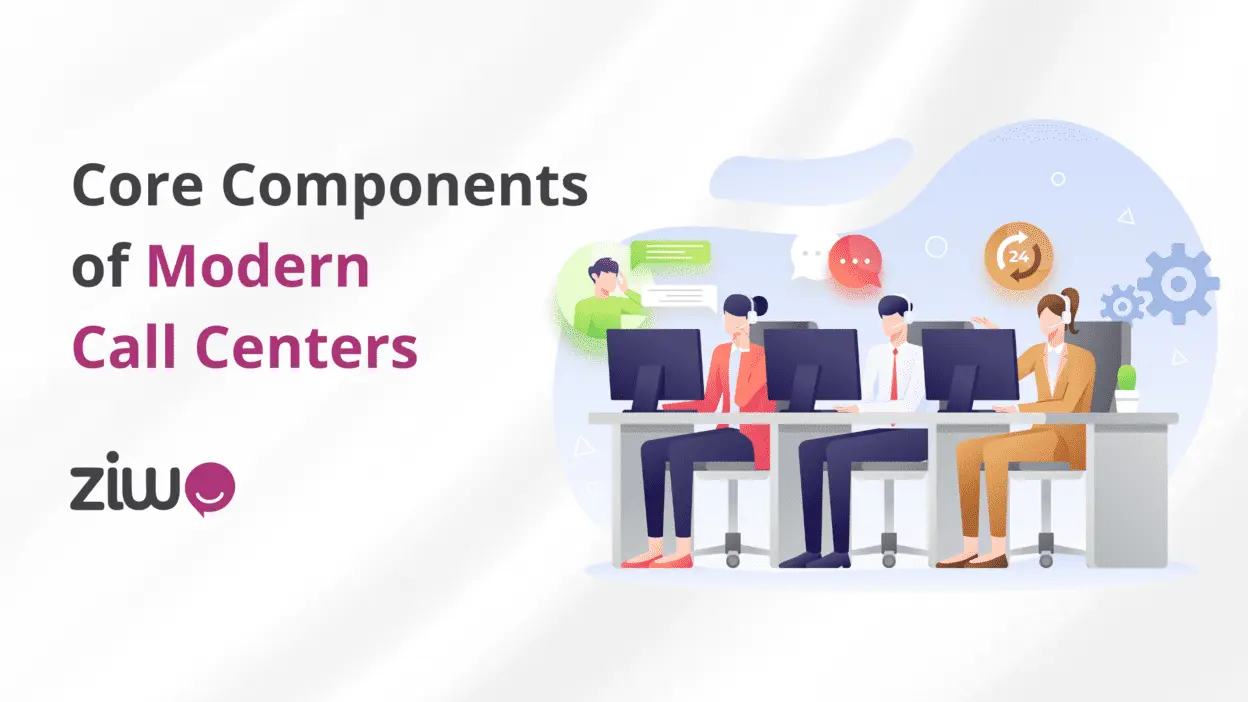
Quels sont les principaux éléments des technologies modernes de centre d'appel ?
Les composants de base des technologies de centre d'appels modernes, en particulier les solutions decentre d'appels dans le cloud, comprennent :
- L'infrastructure téléphonique : le backbone du centre d'appel, le convoyeur de la colonne vertébrale et le routeur communiquent par le biais du RTPC ou de la VoIP.
- VoIP (Voice over Internet Protocol) : fournit une communication vocale sur Internet à un coût inférieur à celui des lignes téléphoniques. Elle permet donc de réaliser des économies et d'être plus flexible.
- RTPC (réseau téléphonique public commuté) : l'infrastructure conventionnelle du réseau téléphonique qui relie les communicateurs par des connexions à commutation de circuits.
- Solutions logicielles : la technologie cloud fournit également des services centralisés qui supervisent les opérations du centre d'appels, telles que le routage des appels, la gestion des agents et la création de rapports.
- Systèmes d'acheminement et de gestion des appels : décidez d'un flux d'appels pour un agent qui correspond aux compétences spécifiées, à la langue, à l'internet complet ou même à la priorité.
- Systèmes de réponse vocale interactive (IVR) : Il s'agit de systèmes interactifs qui permettent aux utilisateurs de passer des appels et de fournir des informations à l'aide de la voix ou de claviers.
- Informatique en nuage : Garantit la flexibilité et peut être mis à l'échelle en hébergeant l'infrastructure et les logiciels du centre d'appels dans un nuage où ils peuvent être facilement accessibles par tout ce qui dispose d'une connexion internet.
- Communication omnicanale : Facilite les clients à communiquer avec les centres d'appels via plusieurs supports, à savoir le téléphone, l'email, le chat, les médias sociaux et les SMS.
Intégration de la gestion de la relation client (CRM) : planifie de manière transparente les systèmes des centres d'appels avec la plateforme CRM de sorte que le personnel des centres d'appels reçoive les données des clients et puisse ainsi améliorer les interactions personnalisées.
Mesures de sécurité : fournir des mesures de sécurité complètes pour éviter les menaces telles que les violations de données et garantir que les informations privées des clients et les opérations du centre d'appel sont prises en charge.
Introduction à l'évolution de la technologie des centres d'appel
Au fil du temps, la technologie des centres d'appels a connu des changements radicaux, en l'occurrence des plateformes téléphoniques très rudimentaires et basiques à des systèmes multicanaux de pointe.
En raison de la croissance rapide des télécommunications, du traitement et de l'assistance à la clientèle, une activité florissante de développement de produits a vu le jour. Contrairement au passé, les centres d'appel avancés utilisent diverses technologies, telles que les systèmes de communication multicanaux, pour offrir aux clients des expériences de conversation excellentes et individualisées.
Cet article retrace la progression de la technologie des centres d'appel, en fournissant une image claire des développements et innovations notables qui ont donné naissance aux centres d'appel actuels.
L'épine dorsale des centres d'appel : l'infrastructure téléphonique
L'infrastructure téléphonique devient la base des centres d'appel et un aspect nécessaire pour connecter les clients et les agents par le biais de la voix. Cette infrastructure comprend à la fois les réseaux RTC classiques et la VoIP qui introduit les communications vocales sur l'internet1.
Le RTPC fonctionne sur le modèle des connexions à commutation de circuits utilisées pour les communications vocales, qui utilisent les lignes téléphoniques existantes pour relier les appelants aux agents. Nonobstant, la large utilisation de la VoIP est basée sur l'internet - c'est la technologie de communication la plus rapide et la plus pratique qui offre le meilleur rapport qualité-prix.
Le RTPC et la VoIP jouent un rôle crucial dans la communication des centres d'appel, ce qui permet aux clients d'appeler les agents à temps et d'obtenir une aide rapide.
À l'ère du numérique, les centres d'appel ont tendance à utiliser à la fois les technologies RTC et VoIP, ce qui leur permet d'être plus flexibles et plus efficaces.
Le RTC est sans aucun doute une solution stable pour obtenir une connexion téléphonique à l'ancienne, mais la VoIP offre à ses appelants des avantages supplémentaires tels que l'économie et la croissance. L'amélioration de l'infrastructure téléphonique pour combiner les deux technologies peut permettre aux centres d'appels de gérer efficacement un volume élevé d'appels et de créer des expériences de haute qualité pour les clients, tout en évoluant en fonction des changements technologiques.
L'infrastructure téléphonique devient l'épine dorsale de tout portefeuille qui permet aux organisations d'exceller dans la fourniture d'un soutien à la clientèle de haute qualité et, en fin de compte, d'économiser sur l'utilisation des ressources.
VoIP : la nouvelle ère de la communication
La VoIP, qui signifie Voice over Internet Protocol, affecte directement les méthodes actuelles de communication des entreprises et introduit un système de communication avec les clients qui n'existait pas il y a dix ans, marquant ainsi un changementsignificatif dans la communication des centres d'appel.
La technologie VoIP, qui achemine les appels vocaux via l'internet au lieu des lignes de télécommunication conventionnelles, permet de réduire les coûts, d'accroître la flexibilité et de donner accès à des logiciels spécialisés modernes tels que l'IVR, le routage des appels et l'analyse en temps réel.
Il est utile aux entreprises en termes de centres de contact et de minimisation des obstacles à la communication qui apportent la plus grande satisfaction aux clients.
Le RTPC et son rôle dans les centres d'appels modernes
Le RTCP, également connu sous le nom de réseau téléphonique public commuté, n'est pas démodé, en particulier dans les centres d'appel, même si la technologie VoIP est en plein essor.
Comme le RTPC, un ancien système, le RTPC assure la communication vocale en utilisant des lignes téléphoniques traditionnelles connues pour leur fiabilité.
Peu d'entreprises utilisent encore le RTPC en raison de sa stabilité et de sa large utilisation. Le RTC continue à fonctionner dans les zones frontalières ou pendant les crises, ainsi qu'en cas d'insuffisance de l'infrastructure de l'internet.
La VoIP a une longueur d'avance en termes de coûts et de flexibilité, mais le RTC, en tant qu'élément clé des centres d'appel, garantit que ces opérations bénéficient d'un service essentiel ininterrompu.
Solutions logicielles : le cerveau des opérations
Les logiciels informatiques servent de mécanisme de réflexion derrière les processus des centres d'appel, incarnant les considérations clés dans le choix d'un logiciel de centre d'appel, et sont primordiaux dans la gestion de l'ensemble des activités2 du point de contact avec le client. Ces solutions comprennent une série de fonctions : ACD, IVR, enregistrement des appels, analyse et intégration avec le système CRM.
Elles réduisent considérablement les temps d'attente et améliorent les performances des agents. En outre, elles facilitent considérablement l'ensemble du processus d'interaction avec le client.
Les solutions logicielles peuvent individualiser les fonctionnalités et fournir un suivi en temps réel, ce qui permet aux centres d'appels de répondre avec succès aux demandes des appelants, de résoudre les problèmes et de développer des liens solides avec les consommateurs.
Systèmes de routage et de gestion des appels.
Les systèmes de routage et de gestion des appels sont parmi les éléments les plus importants des centres d'appels modernes, car ils accélèrent les files d'attente des appels entrants et les distribuent aux agents ou aux départements nécessaires en fonction de données préalables telles que la disponibilité, le niveau de compétence et la priorité du client.
Ces mécanismes permettent aux appelants d'être acheminés plus rapidement vers la ressource la plus appropriée, ce qui améliore l'efficacité des agents du service clientèle et la satisfaction globale des clients.
Grâce à leurs processus d'acheminement numérique des appels et aux représentations en temps réel des temps d'attente et des performances des agents dans les files d'attente, ces systèmes permettent aux organisations qui reçoivent de grandes quantités d'appels de fluidifier leurs opérations et d'offrir un service personnalisé et en temps voulu à leurs clients.
Systèmes de réponse vocale interactive (IVR)
La réponse vocale interactive (IVR) est l'un des éléments clés que les centres d'appels utilisent pour harmoniser les interactions.Elle joue un rôle essentiel dans les interactions des centres d'appels modernes, en utilisant la voix et les claviers à touches, éliminant ainsi l'intervention humaine3. Ces systèmes robotiques fonctionnent automatiquement grâce à l'utilisation de messages préenregistrés et d'options de menu, guidant les appelants à travers des menus en libre-service dans lesquels ils peuvent effectuer des tâches telles que la récupération d'informations sur leur compte, effectuer des paiements et même planifier des rendez-vous sans aucune intervention humaine.
La technologie IVR accroît l'efficacité en traitant les demandes standard et en dirigeant les appels vers les agents et les départements sélectionnés, ce qui réduit le temps d'attente et, par conséquent, améliore la satisfaction des clients.
De plus, comme la technologie IVR s'interface avec les solutions de centre d'appel telles que les systèmes CRM, il devient possible d'offrir aux clients la meilleure expérience de service client personnalisé et unique en son genre.
Le cloud computing : révolutionner la flexibilité et l'évolutivité des centres d'appels
Aujourd'hui, le cloud est une base de données révolutionnaire offrant des primes où toutes les entreprises peuvent s'adapter et se développer, ce qui révolutionneconsidérablement les opérations des centres d'appels. Le déploiement de solutions de centres de contact dans le cloud facilite une approche dynamique des ressources, ce qui permet d'augmenter ou de réduire les effectifs en fonction de la variation des besoins4 des clients.
Cette disponibilité permet aux organisations d'affiner leurs plans d'exploitation, en garantissant qu'elles ne disposeront que du bon ensemble d'agents pour traiter les appels entrants pendant les périodes de forte activité. Elle leur évite également de surcharger leurs systèmes pendant les périodes creuses.
Par conséquent, un système de cloud computing très rentable permet d'éviter d'investir dans une infrastructure sur site et de réduire les coûts de maintenance.
Grâce à ce modèle de centre d'appel à prix réduit, les petites et grandes entreprises peuvent désormais utiliser des centres d'appels innovants à un prix abordable.
En outre, les services de centre d'appel basés sur le cloud se distinguent par des fonctionnalités de fiabilité et d'accessibilité supérieures à celles des systèmes traditionnels, en offrant une tolérance aux pannes et des mécanismes de basculement pour garantir un service constant, même en cas de défaillance matérielle ou de perturbation du réseau.
En bref, le cloud computing incite les centres d'appels à maximiser leur compétitivité en garantissant la rapidité, l'usine et la rentabilité dans le but de générer et d'offrir une expérience client supérieure et une croissance de l'entreprise dans un environnement très dynamique et concurrentiel.
Communication omnicanale : rencontrer les clients là où ils se trouvent
Grâce à la communication omnicanale, les clients peuvent interagir avec les marques par le biais de plusieurs canaux tels que le téléphone, l'e-mail, le chat, les médias sociaux et les SMS, ce qui garantit une expérience cohérente tout au long de 5 la chaîne.
Par conséquent, ils permettent aux clients de changer de canal sans interruption, tandis que le sujet se poursuit tel quel. Le logiciel connecté améliore l'interaction de plusieurs canaux au sein d'une plateforme, ce qui permet aux agents de fournir aux clients une assistance et un service personnalisés. Cela améliore la satisfaction, la performance et les paramètres de contact avec le client.
Intégration de la gestion de la relation client (CRM)
L'intégration CRM sert de conduit pour conserver les informations transmises entre le logiciel du centre d'appel et les systèmes CRM de manière organisée et plus propre.
Les agents sont ainsi formés, car ils savent que les informations sur les clients qu'ils utilisent dans leurs interactions sont à jour en temps réel, ce qui leur permet de bénéficier d'un service personnalisé et de prendre des décisions en connaissance de cause.
L'unification des données clients en un point précis permet d'améliorer l'efficacité et la satisfaction des clients et de cultiver des relations solides avec eux.
Mesures de sécurité pour les centres d'appels basés sur le cloud
La confidentialité et la sécurité du centre d'appels basé sur le cloud font partie des fondements de la réussite. En effet, elles garantissent la protection des données des clients et le respect des règles de confidentialité.
Les outils utilisés par les institutions méritent d'être énumérés : protocoles de cryptage robustes pour protéger la transmission et le stockage des données, authentification multifactorielle pour empêcher tout accès non autorisé, audits et mises à jour de sécurité réguliers pour trouver et traiter les vulnérabilités, et contrôles d'accès pour contrôler l'accès des personnes aux données en fonction de leur rôle et de leurs permissions.
La configuration sécurisée du réseau et les systèmes de détection des intrusions qui détectent et préviennent les menaces potentielles garantissent que les données restent entre les mains du seul personnel autorisé et habilité. Cela garantit que les informations sur les clients restent privées, valides et accessibles à tout moment.
Le rôle de l'analyse et du reporting dans la réussite d'un centre d'appel
L'analyse et le reporting font partie des techniques les plus vitales qui aident les centres d'appels à atteindre leurs objectifs en présentant les rouages internes, les commentaires des clients et la santé globale de l'entreprise.
Les centres d'appels ayant désormais accès à des outils d'analyse avancés, ils peuvent suivre des paramètres essentiels tels que les volumes d'appels, les temps d'attente et les taux de résolution des appels par rapport à l'année précédente.
Grâce à l'analyse des données, les responsables peuvent localiser les goulets d'étranglement et y remédier rapidement, rationaliser les ressources utilisées et s'appuyer sur des données factuelles pour atteindre l'objectif final.
Mais les gestionnaires peuvent également créer des rapports et des tableaux de bord personnalisés à partir de ces capacités de mesure pour surveiller les performances en temps réel et identifier les tendances au fil du temps, ce qui leur facilite l'anticipation des problèmes et le lancement d'initiatives d'amélioration continue. Dans l'ensemble, les analyses et les rapports sont d'excellents moyens de fournir des solutions basées sur les données aux opérateurs des centres d'appels et aux clients.
Conclusion : l'avenir des technologies des centres d'appel
En conclusion, l'avenir des technologies des centres d'appel est promis à une innovation et à une transformation continues. Grâce aux progrès de l'intelligence artificielle, de l'apprentissage automatique et de l'automatisation, les centres d'appels deviendront de plus en plus intelligents, efficaces et centrés sur le client.
Des technologies telles que les chatbots, le traitement du langage naturel et l'analyse des sentiments permettront des interactions plus personnalisées et proactives avec les clients, tandis que l'analyse prédictive et les prévisions donneront aux centres d'appels les moyens d'anticiper les besoins des clients et d'optimiser l'allocation des ressources.
En outre, l'essor du cloud computing et de la communication omnicanale offrira davantage de flexibilité, d'évolutivité et d'accessibilité, ce qui permettra aux centres d'appels de s'adapter à l'évolution des préférences des clients et à la dynamique du marché. Alors que le paysage numérique continue d'évoluer, les technologies des centres d'appel joueront un rôle central dans le façonnement de l'avenir du service à la clientèle et dans la réussite des entreprises.
Références bibliographiques
1 - Infrastructure téléphonique et technologies VoIP :
¹ Middleton, C., & Longford, G. (2016). Internet et les télécommunications : The Transformation of Voice Services. MIT Press.
2 - Solutions logicielles et systèmes de routage des appels :
² Hall, J. A., & Hossler, M. (2018). Managing Call Centers : Le rôle des logiciels dans l'amélioration de l'efficacité opérationnelle. Wiley.
3 - Systèmes de réponse vocale interactive (IVR) :
³ Levin, D. (2017). Les systèmes IVR dans les centres d'appels modernes : Automatisation et expérience client. McGraw-Hill.
4 - Le cloud computing dans les centres d'appels :
⁴ Marston, S., Li, Z., Bandyopadhyay, S., Zhang, J., & Ghalsasi, A. (2011). Cloud Computing-The Business Perspective (L'informatique en nuage - la perspective des entreprises). Decision Support Systems, 51(1), 176-189.
5 - Communication omnicanale et intégration de la gestion de la relation client :
⁵ Payne, A., & Frow, P. (2005). A Strategic Framework for Customer Relationship Management (Cadre stratégique pour la gestion des relations avec les clients). Journal of Marketing, 69(4), 167-176.

